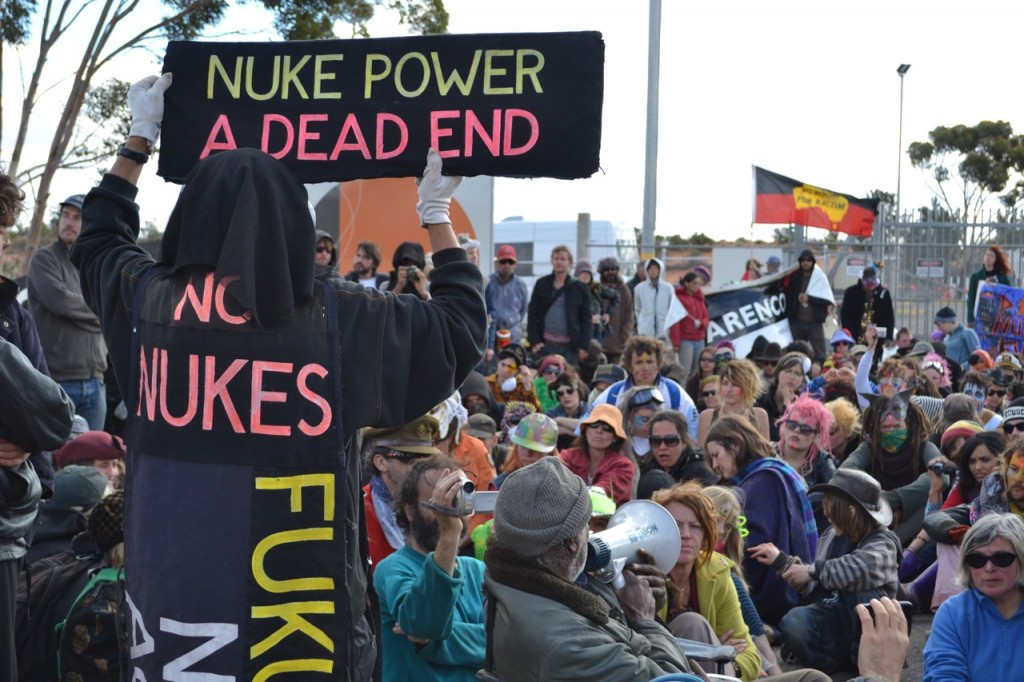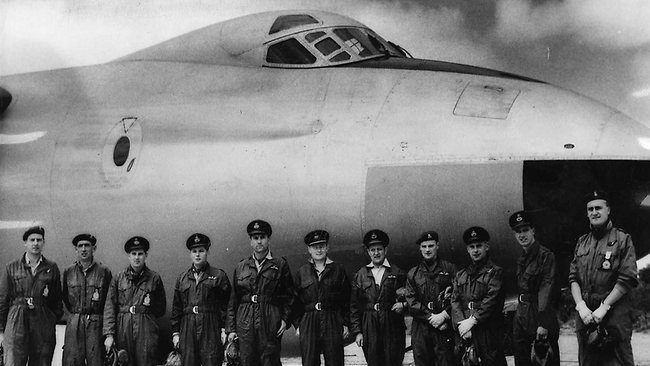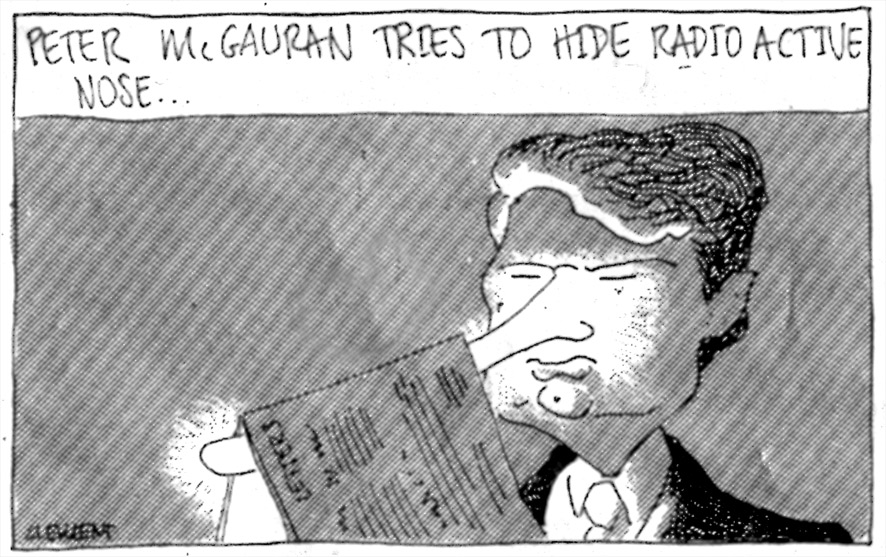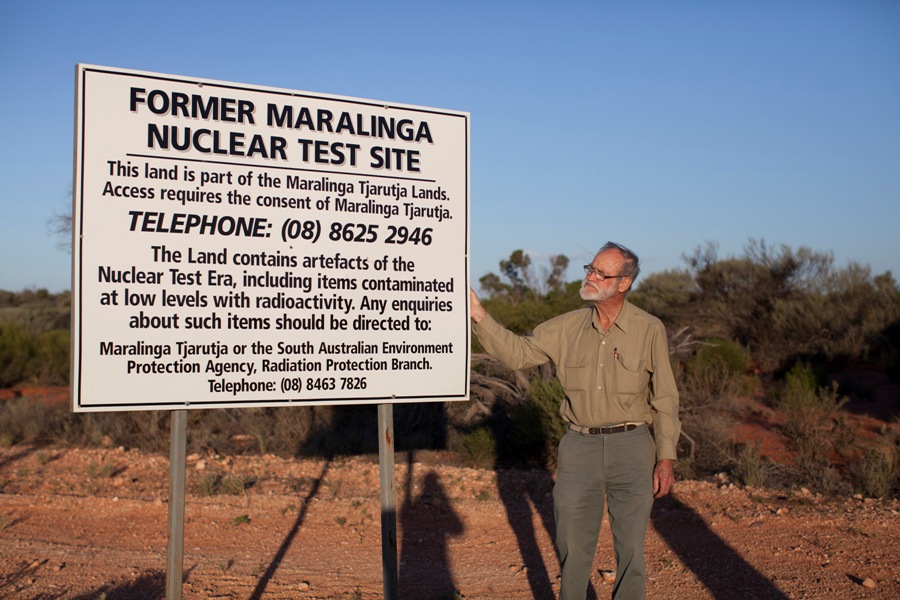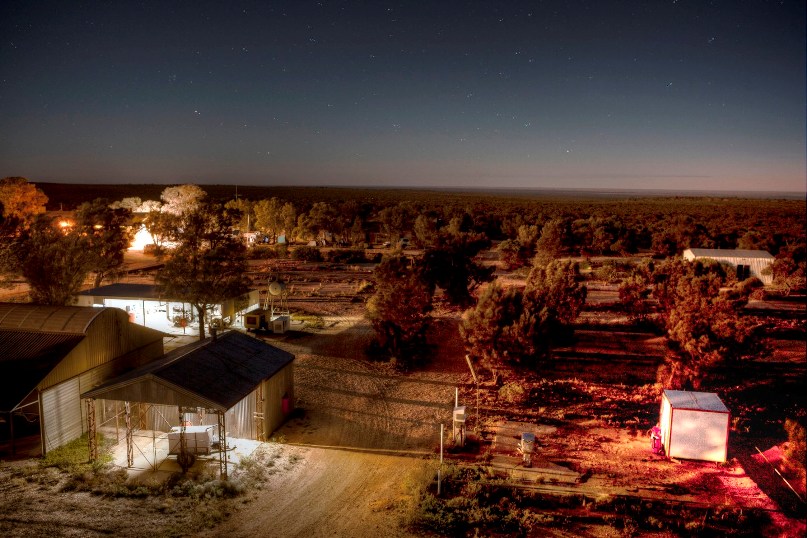BHP Billiton planned to supplement underground uranium mining at Olympic Dam with a massive open-cut mine. Export of uranium was expected to increase from an average of 4,000 tonnes per year to 19,000 tonnes per year and the production of copper, gold and silver was also expected to increase.
However in August 2012 the company shelved plans for an open-cut mine, saying that a smaller version of the project will be considered in coming years. The existing underground mine will continue operating.
The company has not been required to study the viability of mining copper, gold and silver without also extracting and selling uranium − an option (PDF) which would allow for ongoing, profitable mining while addressing at least some of the major problems.
The mine operates under the Roxby Downs Indenture Act, which provides overrides and exemptions from the SA Aboriginal Heritage Act. BHP Billiton is in a legal position to determine what consultation occurs with Traditional Owners, who is consulted, and nature of any consultation. The company decides the level of protection that Aboriginal heritage sites receive and which sites are recognised. It is ironic and hypocritical that BHP Billiton supports Reconciliation Australia’s ‘good governance’ program and has provided over $2 million to Reconciliation Australia, yet will not relinquish its exemptions from the Aboriginal Heritage Act.
 Kokatha Traditional Owners c.2004
Kokatha Traditional Owners c.2004
The Indenture Act also allows wide-ranging and indefensible exemptions from key environmental laws such as the SA Environmental Protection Act 1993, Freedom of Information Act 1991, and Natural Resources Act 2004. Those exemptions were retained when the Indenture Act was amended in 2011 in preparation for the planned expansion. The amended Indenture Act lapses in December 2012 and will need to be renegotiated if BHP Billiton revives its plan for an open-cut mine in some form or other.
In 2011, SA Liberal Party industry spokesperson Martin Hamilton-Smith said “every word of the [amended Indenture] agreement favours BHP, not South Australians.” It beggars belief that the SA Labor government would agree to such one-sided terms; and it beggars belief that Mr Hamilton-Smith and his Liberal colleagues waved it through Parliament with no amendments.
The only politician to insist on some scrutiny of the amended Indenture Act was SA Greens MLC Mark Parnell. He was accused of holding the state’s economy to ransom. The transcripts of his late-night Parliamentary questioning of the Labor government are posted here and here. Time and time again the government spokesperson said that BHP wanted such-and-such a provision in the Indenture Act, and the government simply agreed without further consideration or consultation.
Olympic Dam is a state within a state − and it has shades of a Stalinist state. When a mine worker provided the media with photos of multiple leaks in the tailings dams in 2009, BHP’s response was to threaten “disciplinary action” against any workers caught taking photos.
Mining consultants Advanced Geomechanics noted in a 2004 report that radioactive slurry was deposited “partially off” a lined area of a storage pond at Olympic Dam, contributing to greater seepage and rising ground water levels; that there is no agreed, accurate formula to determine the rate of evaporation of tailings and how much leaks into the ground; and that cells within a tailings pond covered an area more than three times greater than recommended, requiring “urgent remedial measures”.
Under the open-cut mine expansion plan, the production of radioactive tailings, stored above ground, would increase seven-fold to 68 million tonnes annually. The tailings contain a toxic, acidic soup of radionuclides and heavy metals. There have been numerous spills and leaks – e.g. in the mid-1990s it was revealed that about three billion litres had seeped from the tailings dams over two years.
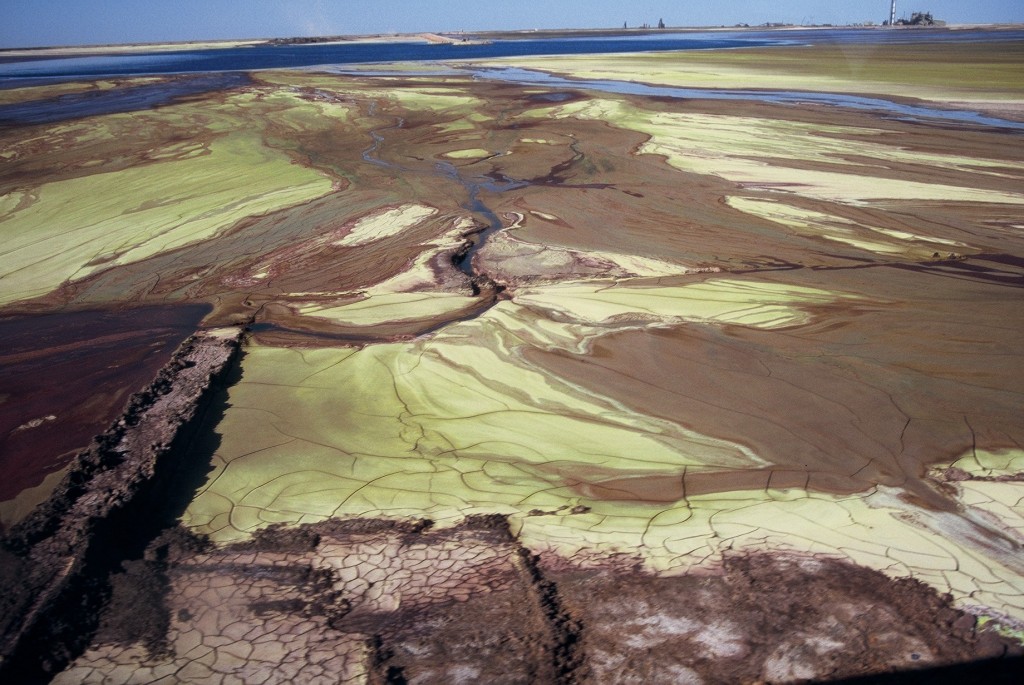 Radioactive tailings, Olympic Dam. Photo by Jessie Boylan
Radioactive tailings, Olympic Dam. Photo by Jessie Boylan
In 2010, a mine worker was sufficiently concerned about occupational health issues at Olympic Dam that he leaked information to the media. The leaked documents show that BHP uses manipulated averages and distorted sampling to ensure its official figures of worker radiation exposure slip under the maximum exposure levels set by government. The risks will escalate with plans for a massive expansion of the mine. The BHP whistleblower said. “Assertions of safety of workers made by BHP are not credible because they rely on assumptions rather than, for example, blood sampling and, crucially, an assumption that all workers wear a respirator when exposed to highly radioactive polonium dust in the smelter.”
Uranium production at Olympic Dam was expected to increase to 19,000 tonnes per year under the open-cut expansion plan, sufficient to fuel 95 power reactors which would produce 2,850 tonnes of high-level nuclear waste per year (in the form of spent nuclear fuel). That amount of spent fuel contains 28.5 tonnes of plutonium − enough for 2,850 nuclear weapons each year.
BHP Billiton sells uranium to nuclear weapons states in breach of their NPT disarmament commitments, dictatorships, states refusing to ratify the Comprehensive Test Ban Treaty, states blocking progress on a Fissile Material Cut-Off Treaty, states with a history of secret nuclear weapons research, and states stockpiling ‘civil’ plutonium. A new low was set in 2006 when the federal government, with BHP Billiton’s support, negotiated a uranium export agreement with the secretive, repressive, militaristic, undemocratic regime in China. The expansion of the Olympic Dam mine is heavily predicated on the export of copper-uranium concentrate to China.
For the open-cut expansion plan, BHP Billiton proposed an increase in water consumption from 35 million litres daily (from the Great Artesian Basin) to over 250 million litres daily (up to 50 million litres daily from local groundwater, up to 42 million litres daily from the Great Artesian Basin, and the remainder from a proposed desalination plant at Point Lowly, near Whyalla). That’s over 100,000 litres every minute – in the driest state in the driest continent. The water take from the Great Artesian Basin has had adverse impacts on the precious Mound Springs and the desalination plant is also controversial.
Update – December 2013 – Mine expansion still on hold
“BHP’s reluctance to seek a partner for an expanded Olympic Dam project in South Australia may surprise as it’s stuck on the back burner, squeezed by low commodity prices and high development costs estimated by analysts at around $30 billion. In August last year, BHP said it would look for a less costly design for the Olympic Dam mine, which had been expected to bring in billions in tax dollars and create thousands of jobs. Up to now, it hasn’t announced any new plans for the site. At first glance, finding a competitor to share development costs and risks with BHP makes sense. If they also bring in new technology then so much the better. The problem for BHP is that a partner might actually want to get the project moving, even at a much-reduced scale. That would test BHP’s desire to keep annual spending below $15 billion in future, down by a third from last year’s bill totaling $21.7 billion. With uranium prices continuing to hover near eight-year lows, and several countries debating nuclear power in their energy mix, BHP can avoid such tough decisions by keeping full control of the asset.” — Wall Street Journal, 10 Dec 2013.
More information:
- Friends of the Earth www.foe.org.au/anti-nuclear/issues/oz/u/roxby
- Monash Uni environmental engineering lecturer Dr Gavin Mudd’s website: http://users.monash.edu.au/~gmudd/publications.html
- Australian Conservation Foundation www.acfonline.org.au/roxby
- List of spills and accidents at SA uranium mines: www.pir.sa.gov.au/minerals/sa_mines/approved_mines
- SA Greens MLC Mark Parnell’s detailed Q&A with the SA government re 2011 Roxby Downs Indenture Act
- Cuttlefish Country (impacts on the Spencer Gulf and the Giant Cuttlefish)
- Save the Basin (impacts on the Great Artesian Basin)
Videos about Olympic Dam mine:
- Talk by Dr Gavin Mudd from Monash University (and see parts two and three).
- David Noonan talk about Olympic Dam (and see parts two and three)
- ‘Olympic Dam Mega-Expansion Without Uranium’ Report Launch (and click here to download the PDF report).
- Interview with FoE’s Jim Green
- All That Glitters is Not Gold
- Risks of BHP’s proposed desalination plant on the Giant Cuttlefish
- Impacts of the water take from the Great Artesian Basin on the Mound Springs
- Uranium – Is it a country?
- BHP Peep Show
- BHP Billiton AGM – protests 27 November 2008
- Greens Senator Scott Ludlam + government propaganda
- Interview with SA Greens MLC Mark Parnell
- Independent Daily statement
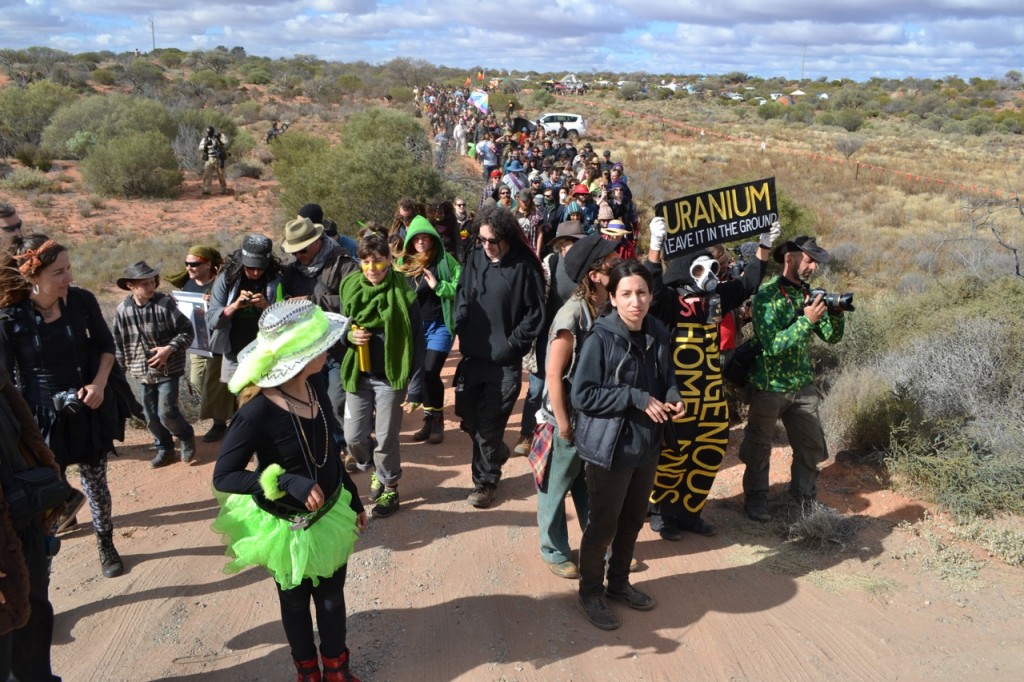 Above and below: Over 500 people attended the Lizard’s Revenge protest at Olympic Dam, July 2012, despite the risk of the sort of police brutality faced by protesters at Beverley a decade earlier. www.lizardsrevenge.net
Above and below: Over 500 people attended the Lizard’s Revenge protest at Olympic Dam, July 2012, despite the risk of the sort of police brutality faced by protesters at Beverley a decade earlier. www.lizardsrevenge.net
Videos about Lizards Revenge:
- http://lizardsrevenge.net/video
- youtube.com search for Lizards Revenge: click here.
- Uncle Kevin Buzzacott Interviewed prior to Lizard’s Revenge
- Anti-uranium protesters arrested
- Protesters blockade BHP mine site
- Activists break through gate at uranium mine (TV news)
- Police shutting down the Lizards Revenge cricket game
- Frocks On The Frontline
[This webpage last updated December 2013.]

